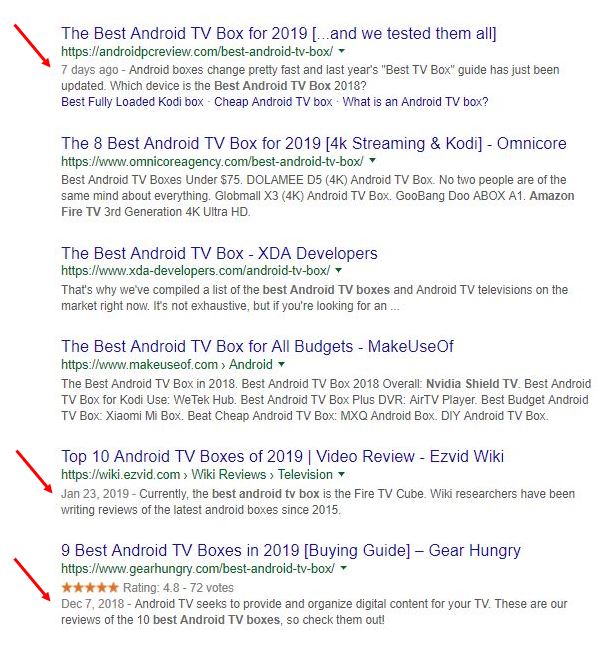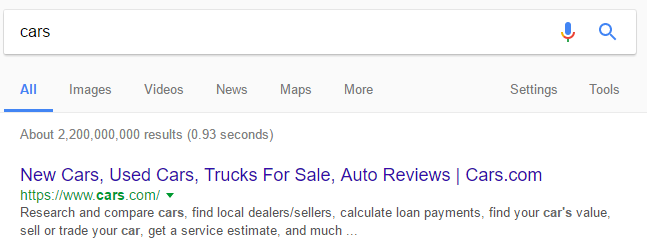While Google’s mission of providing the most relevant and reliable information available stays the same, each year and even month new nuances are added to its ranking algorithm. That being said, it has never been more important to keep up with changes in Google Search’s ranking algorithm. With Google 2021 in full swing, here are the top 10 Google Search ranking factors to take into consideration:
1. Content is Still King
Content Quality
High ranking content refers to in-depth content that covers a broad spectrum of its respective subject. Content must provide real value to the user and should incorporate engaging visual content to complement the written content.
Remember, Quality beats quantity every-time. Focus on value, not word count.
Content Length
There is no clear rule of thumb regarding the optimal word count for an article, as it varies per subject. However, we do notice that relatively longer, more comprehensive content typically achieves higher rankings. A study by Niel Patel reveals a correlation between content length and top Google search positions.
Pro Tip
Use Google’s semantic search to optimize keyword targeting in your articles. Semantic queries can be found by browsing the “related search” results at the bottom of the Google search results page.
For example, a search for “content marketing” reveals the following related searches. If you are writing an informational article on content marketing, you can use these semantic queries to get a better understanding of related keywords.

E-A-T (Expertise, Authoritativeness, Trustworthiness) and Information Accuracy
While not a direct ranking factor, EAT signals are very important for sites that have beneficial purposes, especially for those that cover topics that can potentially impact a person’s health or finances (YMYL, “Your Money or Your Life”). So basically, Google is looking to rank higher that content that is written by subject matter experts, people with formal or everyday expertise (depending on query intent), and/or those with a reputation in a field that is recognized by others.
Make sure your content has factually accurate information or is aligned with scientific consensus and cites other trustworthy sources. It should be easy to find the person responsible for the content, as well as the website’s contact information. For more details, check out Google’s Quality Raters Guidelines.
2. Backlinks
Backlinks remain one of the strongest ranking signals in Google’s search algorithm. The more links you have from multiple high-authority domains, the better your chances are to rank well for top keywords. Online marketers should pay close attention to their backlink profiles, especially given recent updates such as “Penguin 4.0”, which cleaned and filtered sites with low-quality backlink profiles.
3. Rankbrain
The third-most important Google ranking signal is RankBrain, which aims to provide the most relevant and useful results by better understanding user intent behind a search query. RankBrain uses machine learning to understand complex searches and their relatedness to particular topics, while taking into account how the user behaves towards the exact set of search results. So, search results that have more success with users get rewarded with higher rankings.
User Experience
It’s hard to say exactly how to measure the effect of UX, as it varies per industry and demographic. Part of this is covered by Core Web Vitals metrics that we will talk about later in this article. We do see a strong correlation between an accurate UI/UX and good placements on the SERP. Remember – your site has to be functional first. I highly recommend you read Joe Natoli’s article on Signal vs. Noise: Removing Visual Clutter in the UI.
4. Freshness
The Google Freshness Algorithm is real game changer. The algorithm originally rolled out in June 2010 and has had a powerful impact over the past couple of years. If you’re a big publisher with a lot of old content that does not rank, updating old articles could be huge. Google seems to be some what biased to new content as it prioritizes it and makes sure that at least some of the SERP features are up to date results. For example, Let’s search for “Best Android TV Box”:

The #1 results is the most up to date. 3 out of the top 6 results have the date of the article listed by Google. The freshness algorithm seems to update much faster than other core algorithms Google updates. For example, check out the impact of updating and old article made for one of our client sites. You can see it only takes a few days to see an impact in the SERP.

5. Mobile Friendliness
On November 4, 2016, Google announced mobile-first indexing. This means that a website’s compatibility with mobile now directly affects its search rankings. In the past, web designers built desktop versions first, then mobile. Today, with mobile usage surpassing desktop, websites should prioritize mobile versions to provide a better user experience.
Google’s mobile-first approach is already changing up search results, especially when it comes to local results – users now receive results that better target their current location. We did notice, however, that there is a growing indication of Geolocation actively affecting the local search queries on desktop as well.
6. Page Speed
With a mobile-first indexing approach from Google, page speed has become more crucial than ever. Websites with slow page speed will have a harder time ranking at top results. Google’s goal with these updates is to provide users with search results which include sites that provide the best user experience.
7. Core Web Vitals
Previously announced as the May 2021 update, but postponed to mid-June with a full rollout in August 2021, this ranking factor is aimed to reward the sites with good Loading, Interactivity and Visual Stability measured with the Largest Contentful Paint, First Input Delay and Cumulative Layout Shift metrics accordingly.

Source: https://web.dev/vitals/
Largest Contenful Paint measures the time it takes to display the largest element that appears on the screen. This element can be a text, image, video or anything else depending on the page layout. To improve LCP, you should look for ways to minimize or remove render-blocking resources, improve server response time and resources load time.
First Input Delay aims to measure responsiveness to user interaction – the time it takes for a page to respond to the user’s first interaction. Breaking up long tasks, optimizing the page for interaction readiness and reducing JavaScript execution time can help you get a good FID score.
Cumulative Layout Shift measures visual instability of the content and sums up all layout shifts that occur on the page. In order to get a green CLS score, you should avoid dynamically injected content, dedicate defined space for ads, make sure all your images have defined dimensions and fonts are rendered without significant visual instability.
8. Schema Markup
SEO is going local in a big way, so if you’re wondering how to rank higher on google then this is an important ranking factor, especially for small business SEO. Schema markup code helps search engines get a better understanding of specific texts such as addresses, phone numbers, recipes, reviews and more.
Particularly for local businesses, implementing a site-wide schema code can be highly beneficial. For example, it is important to make sure you tell Google where your business is located by implementing a correct schema code.
Example of a business address schema code:

Pro Tip
Make sure your data markup adheres to Google guidelines.
9. Brand and Domain Power
Branded Searches and Social Signals
Branded searches provide a strong signal to Google’s search algorithm. The more traffic a website gets from branded searches, the more it will be recognized by the algorithm. Additionally, we have noticed that social signals from Facebook, Reddit, Quora, Pinterest and other social sites also correlate with search rankings. This is not to say that a strong online social presence alone can drive organic traffic. Sites that combine brand power and social signals with efforts across all other SEO channels can achieve greater search visibility.
Domain Power
In the past, exact-match domains were a sure-fire way to boost organic search visibility. While not as foolproof as before, domains still have influence. With Google’s smarter algorithm, we do still see two major verticals of domain power:

Pro Tip
How long does it take to rank in top positions? Check out this awesome article by AHrefs.com.
10. HTTPS
This is actually an official ranking factor as of Aug 2014, when it was first announced on the Official Google Webmaster Central Blog. The official quote was “Security is a top priority for Google. We invest a lot in making sure that our services use industry-leading security, like strong HTTPS encryption by default. That means that people using Search, Gmail and Google Drive, for example, automatically have a secure connection to Google.” On October 17, 2017, Google released another notification, warning webmasters about using the HTTP protocol with sites on which users are required to enter data.
Though we haven’t seen a significant impact on SEO for sites that have migrated to secure HTTPS encryption, it’s highly recommended that you move your site to HTTPS to avoid any mishaps from future Google updates.
Final Thoughts
There will be a big impact on SEO marketing strategies in 2021. Recent Google updates are paving the way for sites with quality content that provides real value for users. Google is also getting much better at measuring how users interact with your content. Understanding these 10 valuable ranking factors can make or break your Online Marketing strategy.




